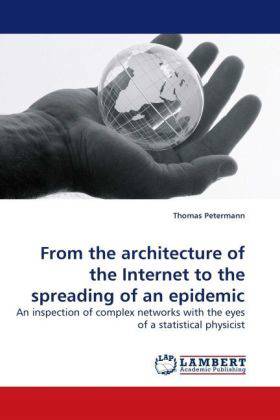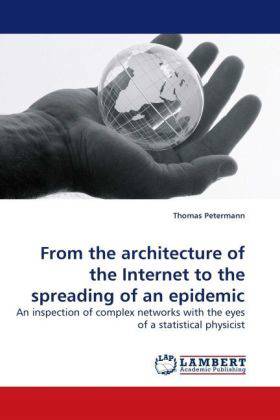
- Afhalen na 1 uur in een winkel met voorraad
- Gratis thuislevering in België vanaf € 30
- Ruim aanbod met 7 miljoen producten
- Afhalen na 1 uur in een winkel met voorraad
- Gratis thuislevering in België vanaf € 30
- Ruim aanbod met 7 miljoen producten
Zoeken
From the architecture of the Internet to the spreading of an epidemic
An inspection of complex networks with the eyes of a statistical physicist
Thomas Petermann
Paperback | Engels
€ 71,45
+ 142 punten
Omschrijving
In recent years, statistical physicists have begun to apply their methods to problems stemming from disciplines which are not theirs, such as the dynamic laws governing the growth of the Internet. This monograph is a contribution to the emerging field of complex networks, i.e. the study of the dynamic and statistical properties of systems composed of many nodes connected by links. After reviewing the topological properties shared by many real large networks along with the most popular models, a number of questions are discussed from a statistical physics perspective: Why does the map of the Internet have to be interpreted carefully? How does its local topology influence the spread of computer viruses? Under what circumstances is it possible to build a network that is both efficient and inexpensive, when a cost has to be borne for establishing physical links between the nodes? This book will prove useful to all scientists interested in seeing an example of how traditional approaches can successfully be applied to present-day challenges.
Specificaties
Betrokkenen
- Auteur(s):
- Uitgeverij:
Inhoud
- Aantal bladzijden:
- 128
- Taal:
- Engels
Eigenschappen
- Productcode (EAN):
- 9783838319995
- Verschijningsdatum:
- 2/06/2010
- Uitvoering:
- Paperback
- Afmetingen:
- 152 mm x 229 mm
- Gewicht:
- 200 g

Alleen bij Standaard Boekhandel
+ 142 punten op je klantenkaart van Standaard Boekhandel
Beoordelingen
We publiceren alleen reviews die voldoen aan de voorwaarden voor reviews. Bekijk onze voorwaarden voor reviews.








